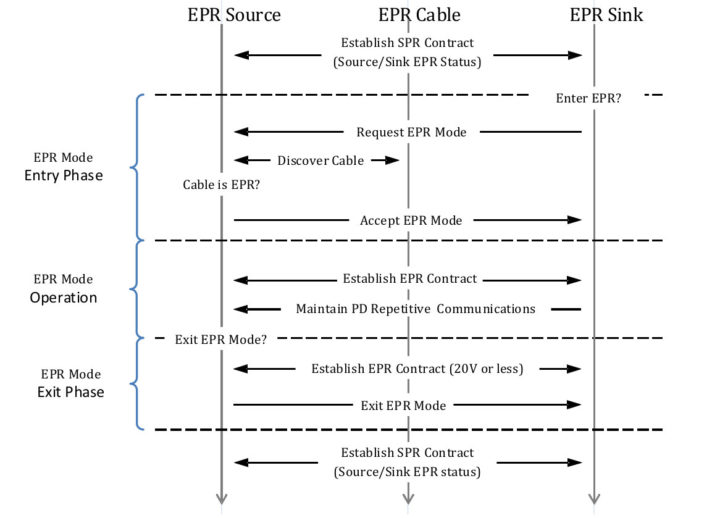Many devices have switched from a Micro USB port or a power barrel jack to the USB-C port in recent years, as the latter allows for higher currents, and up to 100W power input in USB PD (Power Delivery) compliant systems.
While 100W will be more than enough for most devices, more power-hungry devices or systems still need a power brick, for example, gaming laptops and mobile workstations. But the USB Type-C specification 2.1 aims to change that by upping the maximum power to 240W.
As noted by Benson Leung in a Reddit Thread the part of the specification that handles the 240W power is the EPR (“Extended Power Range”) that defines requirements for cables, chargers, and devices:
3.11 Extended Power Range (EPR) Cables
3.11.1 Electrical Requirements
Extended Power Range cables have additional requirements to assure that these cables can deliver the full defined voltage and current range for USB PD EPR operation. EPR cables shall functionally support a reported 50 V and 5 A o peration. The minimum functional voltage that a cable shall support is 53.65 V. The electrical components potentially in the path of V BUS in an EPR cable, e.g. bypass capacitors, should be minimally rated for 63 V.To control the impact of inductive kickback and ringing that can increase the chance of arcing between a USB Type-C plug and receptacle when a cable is removed while power is still applied, an EPR cable may include a snubber capacitor within the plug at ea ch end of the cable. See Appendix H for more information.
3.11.2 EPR Cable Identification Requirements
All EPR cables shall be Electronically Marked and include EPR-specific information in the eMarker as defined by the USB PD specification. As defined in the USB PD specification, EPR cables are marked as 50 V and 5 A capable. All EPR cables shall be visibly identified with EPR cable identification icons as defined by the USB-IF. This is required so that end users will be able to confirm visually that the cable supports up to as high of PDP = 240W as defined in the USB PD specification.

240W can be delivered using 48V up to 5A. You’ll find the full details both in the latest USB Type-C 2.1 and USB PD 3.1 specifications that can be found on usb.org here and there.
Via Liliputing

Jean-Luc started CNX Software in 2010 as a part-time endeavor, before quitting his job as a software engineering manager, and starting to write daily news, and reviews full time later in 2011.
Support CNX Software! Donate via cryptocurrencies, become a Patron on Patreon, or purchase goods on Amazon or Aliexpress




